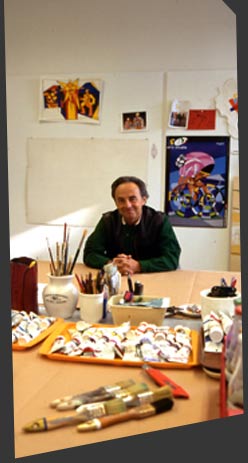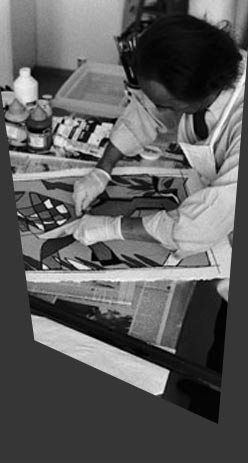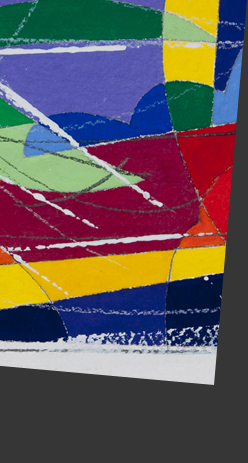There is no doubt that, in addition to their clearly cinematographic origins, these paintings also possess an internal dynamic of their own. Indeed, this is probably their principle formal axis. Like fragments of film, once fixed in time and defined in their expressive form, Nespolo’s paintings acquire a new mobility and aesthetic tension, presenting themselves not only as works of art composed of components of the world of the film, but also, and above all, as concentrated elements of kinetic art. Yet, the art of cinematography depends not only on visual rhythm and virtual movement, but also on light. The immobility of Nespolo’s paintings confirm and increase the potential offered by the original elements for exploiting light and colour in a seemingly experimental application in which theory and practice finally come together. [â¦]
Nespolo’s film-paintings offer the entire history of film revisited by a spectator-actor, by a juggler of colours and forms, by an artist who amuses himself by surprising his spectators, but also by trying to stimulate emotions and perhaps even by attempting to teach them. Indeed, although the best way of teaching film is undoubtedly to encourage the pupil to watch as many films as possible, it is also necessary to stimulate a reflection on the subtle pleasure generated by the memories and sensations experienced during the film and the mental images it creates. This subtle pleasure is undoubtedly offered by the “cinematographic” paintings of Ugo Nespolo.




